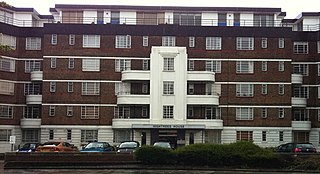This article needs additional citations for verification .(March 2018) |
In the English system of common law, judges have devised a number of mechanisms to allow them to cope with precedent decisions.
This article needs additional citations for verification .(March 2018) |
In the English system of common law, judges have devised a number of mechanisms to allow them to cope with precedent decisions.
According to Montesquieu, it is Parliament that has the rightful power to legislate, not the judiciary. The legal fiction is that judges do not make law, they merely "declare it". Thus, common law is declaratory, and this is often retrospective in effect. For example, see Shaw v DPP [1] and R v Knuller . [2] In the search for justice and fairness, there is a tension between the needs for, on one hand, predictability and stability, and "up-to date law", on the other. [3]
There is a hierarchy of courts, and a hierarchy of decisions. All lower courts are bound by the judgments from higher courts; and higher courts are not bound by decisions from lower courts.
With one exception, courts of record are bound by their own precedent decisions. The House of Lords used to be bound by its own decisions, but in 1966 it issued a Practice Direction declaring that it would no longer feel so constrained; [4] the Supreme Court is similarly free to depart from earlier decisions. By contrast, the Court of Appeal is bound by its own decisions, although for a period Lord Denning, MR, acted as though it were not. [5] [6] Inferior courts are not strictly courts of record, but some, such as employment tribunals methodically report their own cases, and have built up a specialist body of common law. Courts such as the magistrates court cannot establish precedent.
Even if a court is bound to observe a precedent decision, it does not follow that the whole of the judgment is binding. One must distinguish between ratio decidendi and obiter dicta . Ratio decidendi is the "reason for the decision", and forms the crux of the cases; whereas obiter dicta is "other things that are said", i.e. matters said in passing, judicial asides, hypothetical issues, and broad issues. Ratio decidendi is binding on other courts, whereas obiter dicta is persuasive only.
An effective test to see if a part of the judgment is ratio or obiter is "Wambaugh's Inversion Test", whereby one must invert the question, and ask, "would the decision have been different without this part of the judgment?". In other words, ask, "Is it crucial?". If not, it is obiter dicta.
If a judgment establishes a broad principle of law, then strictly speaking that principle is too wide to be said to be ratio decidendi. Nevertheless, if that broad principle is approved and applied by later courts, then the principle will eventually be treated as ratio. A particular example is the broad "neighbour principle", enunciated by Lord Atkin in Donoghue v Stevenson 1932, which has become the basis of the modern law of negligence. When judges may face conflicting precedents, they may select the preferable case. [7]
Dissenting judgments are not ratio, and so must be obiter. Sometimes, with the passage of time, more attention is given to the dissenting judgment that to the majority judgment. [8] [9] Scottish decisions (and decisions from the USA and common law jurisdictions in the Commonwealth) are, like obiter dicta, merely persuasive in England.
If faced with a binding judicial precedent, a court has a number of ways to respond to it, and may use the following legal devices and mechanisms: [10]
Precedent is a principle or rule established in a legal case that becomes authoritative to a court or other tribunal when deciding subsequent cases with similar legal issues or facts. The legal doctrine stating that courts should follow precedent is called stare decisis.
Case law, also used interchangeably with common law, is a law that is based on precedents, that is the judicial decisions from previous cases, rather than law based on constitutions, statutes, or regulations. Case law uses the detailed facts of a legal case that have been resolved by courts or similar tribunals. These past decisions are called "case law", or precedent. Stare decisis—a Latin phrase meaning "let the decision stand"—is the principle by which judges are bound to such past decisions, drawing on established judicial authority to formulate their positions.
The Practice Statement [1966] 3 All ER 77 was a statement made in the House of Lords by Lord Gardiner LC on 26 July 1966 on behalf of himself and the Lords of Appeal in Ordinary, that they would depart from precedent in the Lords in order to achieve justice.
In legal writing, a dictum is a statement made by a court. It may or may not be binding as a precedent.

Central London Property Trust Ltd v High Trees House Ltd [1947] KB 130, commonly called High Trees, is a leading opinion in the High Court relating to contract law. It reaffirmed and extended the doctrine of promissory estoppel in the contract law of England and Wales. However, the most significant part of the judgment is obiter dictum as it relates to hypothetical facts; that is, the landlord did not seek repayment of the full wartime rent.
Obiter dictum is a Latin phrase meaning "other things said", that is, a remark in a legal opinion that is "said in passing" by any judge or arbitrator. It is a concept derived from English common law, whereby a judgment comprises only two elements: ratio decidendi and obiter dicta. For the purposes of judicial precedent, ratio decidendi is binding, whereas obiter dicta are persuasive only.

R v Secretary of State for Transport was a judicial review case taken against the United Kingdom government by a company of Spanish fishermen who claimed that the United Kingdom had breached European Union law by requiring ships to have a majority of British owners if they were to be registered in the UK. The case produced a number of significant judgements on British constitutional law, and was the first time that courts held that they had power to restrain the application of an Act of Parliament pending trial and ultimately to disapply that Act when it was found to be contrary to EU law.
Ratio decidendi is a Latin phrase meaning "the reason" or "the rationale for the decision". The ratio decidendi is "the point in a case that determines the judgement" or "the principle that the case establishes".
In law, to distinguish a case means a court decides the holding or legal reasoning of a precedent case that will not apply due to materially different facts between the two cases. Two formal constraints constrain the later court: the expressed relevant factors in the ratio of the earlier case must be recited or their equivalent recited or the earlier case makes an exception for their application in the circumstances otherwise it envisages, and the ruling in the later case must not expressly doubt (criticise) the result reached in the precedent case.
The holding is a court's determination of a matter of law based on the issue presented in the particular case. In other words: under this law, with these facts, this result. It is the same as a 'decision' made by the judge; however "decision" can also refer to the judge's entire opinion, containing, for example, a discussion of facts, issues, and law as well as the holding. The holding is the "legal principle to be drawn from the opinion (decision) of the court."

Balfour v Balfour [1919] 2 KB 571 is a leading English contract law case. It held that there is a rebuttable presumption against an intention to create a legally enforceable agreement when the agreement is domestic in nature.
Per incuriam, literally translated as "through lack of care" is a device within the common law system of judicial precedent. A finding of per incuriam means that a previous court judgment has failed to pay attention to relevant statutory provision or precedents.
Young v Bristol Aeroplane Co Ltd was an English court case that established that the Court of Appeal is bound to follow its own decisions and those of courts of co-ordinate jurisdiction, except in the following cases:

Miliangos v George Frank Ltd, [1976] AC 443 is a leading decision of the House of Lords enforcement of debts. The case created the Miliangos rule that allows creditors under a contract to obtain judgment under a foreign currency. The Lords stated that the date of payment would be the date of conversion to the foreign currency.

Murphy v Brentwood District Council[1991] UKHL 2, [1991] 1 AC 398 was a judicial decision of the House of Lords in relation to recovery for pure economic loss in tort.
Intention to create legal relations, otherwise an "intention to be legally bound", is a doctrine used in contract law, particularly English contract law and related common law jurisdictions.

Merritt v Merritt [1970] EWCA Civ 6 is an English contract law case, on the matter of creating legal relations. While under the principles laid out in Balfour v Balfour, domestic agreements between spouses are rarely legally enforceable, this principle was rebutted where two spouses who formed an agreement over their matrimonial home were not on good terms.
Bad law may be considered to include unsound interpretation of legal principles, or a proposition of law that is erroneous, or an attempted statement of the law that is inaccurate, or non-law.
Coward v MIB was a 1963 Court of Appeal decision on intention to create legal relations, and on the liability of the Motor Insurers Bureau when a passenger in a vehicle is killed or injured through the driver's negligence.

Farah Constructions v Say-Dee Pty Ltd, also known as Farah, is a decision of the High Court of Australia. The case was influential in developing Australian legal doctrines relating to equity, property, unjust enrichment, and constructive trusts, as well as the doctrine of precedent as it applies in Australia.
{{cite web}}: CS1 maint: unfit URL (link)